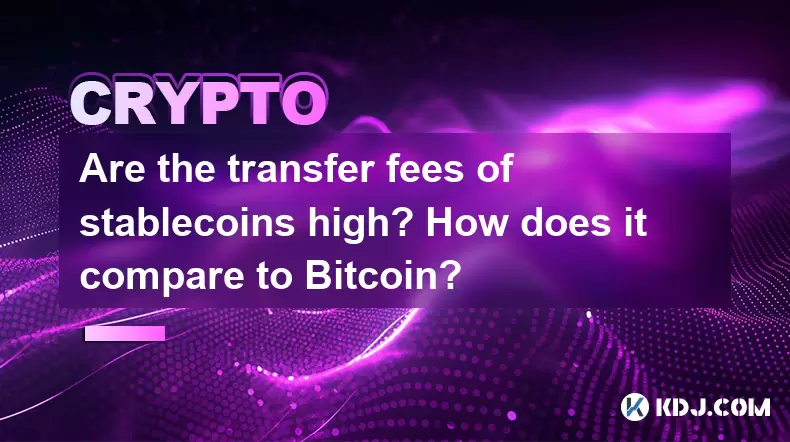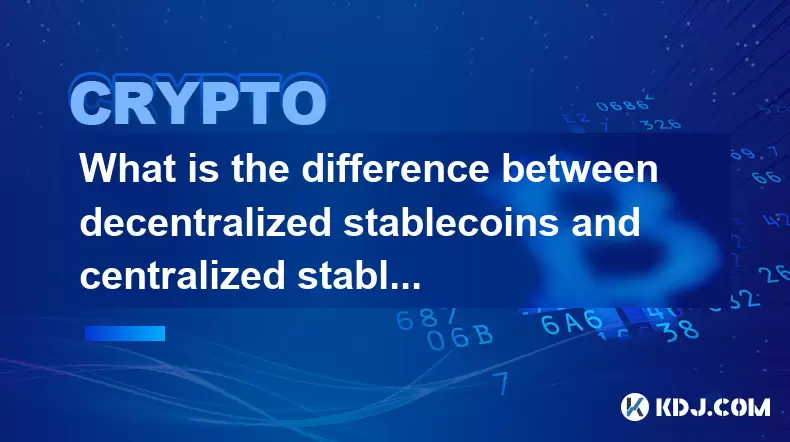-
 Bitcoin
Bitcoin $117900
0.31% -
 Ethereum
Ethereum $3766
0.28% -
 XRP
XRP $3.176
-0.31% -
 Tether USDt
Tether USDt $1.000
0.00% -
 BNB
BNB $795.6
1.51% -
 Solana
Solana $186.8
-1.09% -
 USDC
USDC $0.9999
-0.01% -
 Dogecoin
Dogecoin $0.2353
-1.33% -
 TRON
TRON $0.3226
1.49% -
 Cardano
Cardano $0.8172
-1.08% -
 Sui
Sui $4.178
3.06% -
 Hyperliquid
Hyperliquid $43.05
-3.39% -
 Stellar
Stellar $0.4367
-0.57% -
 Chainlink
Chainlink $18.62
1.47% -
 Hedera
Hedera $0.2828
6.63% -
 Bitcoin Cash
Bitcoin Cash $584.7
5.65% -
 Avalanche
Avalanche $24.81
2.53% -
 Litecoin
Litecoin $112.8
-0.88% -
 UNUS SED LEO
UNUS SED LEO $8.975
-0.08% -
 Shiba Inu
Shiba Inu $0.00001395
-1.07% -
 Toncoin
Toncoin $3.285
-1.05% -
 Ethena USDe
Ethena USDe $1.001
0.01% -
 Polkadot
Polkadot $4.123
0.76% -
 Uniswap
Uniswap $10.49
-0.18% -
 Monero
Monero $326.5
0.14% -
 Dai
Dai $0.9999
-0.02% -
 Bitget Token
Bitget Token $4.576
0.34% -
 Pepe
Pepe $0.00001247
-1.55% -
 Cronos
Cronos $0.1400
3.77% -
 Aave
Aave $295.1
-0.73%
Are the transfer fees of stablecoins high? How does it compare to Bitcoin?
Stablecoins like USDT and USDC on Ethereum can have transfer fees from $0.50 to $5, while on Tron, USDT fees can be as low as $0.01, compared to Bitcoin's potentially high fees.
May 18, 2025 at 07:36 pm

Stablecoins have become a cornerstone of the cryptocurrency ecosystem, offering users a way to transact with less volatility than traditional cryptocurrencies like Bitcoin. One of the critical aspects that users consider when choosing a cryptocurrency for transactions is the transfer fee. In this article, we will delve into the transfer fees associated with stablecoins and compare them to those of Bitcoin, providing a comprehensive analysis to help you make informed decisions.
Understanding Stablecoin Transfer Fees
Stablecoins are cryptocurrencies designed to minimize the volatility typically associated with other cryptocurrencies. They achieve this by pegging their value to an external asset, such as the US dollar, gold, or other fiat currencies. The most common types of stablecoins include Tether (USDT), USD Coin (USDC), and Dai (DAI).
When it comes to transfer fees, stablecoins can vary depending on the blockchain they are built on and the specific protocol they use. For instance, stablecoins like USDT and USDC, which are often built on the Ethereum blockchain, incur fees known as gas fees. These fees are paid to miners for processing transactions and can fluctuate based on network congestion.
To give you a better understanding, let's look at some examples of stablecoin transfer fees:
- USDT on Ethereum: The transfer fee can range from $0.50 to $5, depending on the network's congestion.
- USDC on Ethereum: Similar to USDT, the fees can range from $0.50 to $5.
- USDT on Tron: Since Tron offers lower transaction fees, USDT on Tron can cost as little as $0.01 per transaction.
It's important to note that these fees are subject to change and can be influenced by various factors such as network congestion and the specific wallet or exchange being used.
Comparing Stablecoin Fees to Bitcoin Fees
Bitcoin, the first and most well-known cryptocurrency, operates on its own blockchain and has a different fee structure compared to stablecoins. Bitcoin transaction fees are determined by the size of the transaction in bytes and the priority level set by the sender. The priority level is essentially a tip to miners to include the transaction in the next block.
Here are some key points to consider when comparing Bitcoin fees to stablecoin fees:
- Bitcoin fees can range from a few cents to several dollars, depending on the network's congestion. During peak times, fees can soar to $20 or more.
- Stablecoin fees on Ethereum, such as USDT and USDC, can be comparable to Bitcoin fees during periods of high network congestion. However, they can be significantly lower during less congested times.
- Stablecoins on alternative blockchains like Tron or Solana can offer much lower fees compared to both Bitcoin and Ethereum-based stablecoins.
To illustrate the difference, consider the following scenarios:
- Sending $100 worth of Bitcoin: During a period of high congestion, the fee could be $10, which represents 10% of the transaction value.
- Sending $100 worth of USDT on Ethereum: During a similar period of high congestion, the fee could be around $5, which is 5% of the transaction value.
- Sending $100 worth of USDT on Tron: The fee could be as low as $0.01, which is 0.01% of the transaction value.
Factors Influencing Stablecoin and Bitcoin Fees
Several factors can influence the transfer fees of both stablecoins and Bitcoin. Understanding these factors can help you anticipate and manage your transaction costs more effectively.
- Network Congestion: Both stablecoins and Bitcoin operate on blockchains that can become congested during periods of high demand. When the network is congested, users must pay higher fees to have their transactions processed quickly.
- Blockchain Type: The underlying blockchain technology can significantly impact transaction fees. For example, Ethereum's proof-of-work (PoW) consensus mechanism can lead to higher fees than newer blockchains like Solana, which uses a proof-of-history (PoH) mechanism.
- Transaction Size and Complexity: Larger or more complex transactions, such as those involving smart contracts, can incur higher fees on both stablecoin and Bitcoin networks.
- Wallet and Exchange Fees: Some wallets and exchanges may charge additional fees on top of the network fees, which can vary widely depending on the platform.
Strategies to Minimize Transfer Fees
While transfer fees are an unavoidable part of using cryptocurrencies, there are several strategies you can employ to minimize them:
- Choose the Right Blockchain: Opt for stablecoins on blockchains known for lower fees, such as Tron or Solana, if possible.
- Time Your Transactions: Try to send transactions during off-peak hours when network congestion is lower, which can result in lower fees.
- Use Batch Transactions: If you need to send multiple transactions, consider using batch transactions to consolidate them into a single transaction, thereby reducing the overall fee.
- Adjust Gas Fees: For Ethereum-based stablecoins, you can manually adjust the gas fee to find a balance between cost and transaction speed.
Practical Examples of Transfer Fee Management
To provide a clearer picture of how to manage transfer fees, let's walk through some practical examples:
Transferring USDT on Ethereum:
- Open your Ethereum-compatible wallet, such as MetaMask.
- Enter the recipient's address and the amount of USDT you wish to send.
- Check the current gas fee estimate provided by the wallet.
- If the fee is too high, you can adjust the gas price to a lower setting, but be aware that this may result in a longer processing time.
- Confirm the transaction and monitor its status on a blockchain explorer like Etherscan.
Transferring USDT on Tron:
- Open your Tron-compatible wallet, such as TronLink.
- Enter the recipient's address and the amount of USDT you wish to send.
- The wallet will automatically calculate the fee, which is typically very low.
- Confirm the transaction and track its progress on a Tron blockchain explorer like Tronscan.
Transferring Bitcoin:
- Open your Bitcoin wallet, such as Electrum.
- Enter the recipient's address and the amount of Bitcoin you wish to send.
- The wallet will provide an estimated fee based on the current network conditions.
- You can adjust the fee to a lower amount if you are willing to wait longer for the transaction to be confirmed.
- Confirm the transaction and monitor its status on a Bitcoin blockchain explorer like Blockchain.com.
Frequently Asked Questions
Q: Can stablecoin fees be completely avoided?
A: While it's not possible to completely avoid fees, you can minimize them by choosing the right blockchain and timing your transactions wisely. Some platforms also offer fee-free transfers between their own wallets, but these are typically limited to internal transfers.
Q: Are there any stablecoins with zero transfer fees?
A: Currently, no stablecoins offer zero transfer fees across all platforms and blockchains. However, some stablecoins on certain blockchains, like USDT on Tron, can have fees that are so low they are effectively negligible for most transactions.
Q: How do I know if a stablecoin's transfer fee is too high?
A: To determine if a stablecoin's transfer fee is too high, compare it to the average fees on the blockchain it's using. You can also check fee estimates on blockchain explorers or use wallets that provide real-time fee data. If the fee seems disproportionately high compared to the transaction value or the network's typical fees, it might be worth waiting for a less congested time or considering an alternative blockchain.
Q: Can I predict stablecoin and Bitcoin fees in advance?
A: While you can't predict fees with absolute certainty, you can use tools and resources like blockchain explorers and fee estimation services to get a good idea of current and historical fee trends. This can help you plan your transactions during times when fees are likely to be lower.
Disclaimer:info@kdj.com
The information provided is not trading advice. kdj.com does not assume any responsibility for any investments made based on the information provided in this article. Cryptocurrencies are highly volatile and it is highly recommended that you invest with caution after thorough research!
If you believe that the content used on this website infringes your copyright, please contact us immediately (info@kdj.com) and we will delete it promptly.
- Cryptos to Watch in 2025: Punisher Coin, Chainlink, and the Altcoin Arena
- 2025-07-27 18:30:13
- Bitcoin, Altcoins, Rebound: Navigating the Crypto Comeback Trail
- 2025-07-27 18:30:13
- Ethereum, Bitcoin, and Altcoins: A Shift in Crypto Tides?
- 2025-07-27 19:10:13
- Windtree Therapeutics' Bold BNB Strategy: A $520 Million Crypto Play
- 2025-07-27 19:10:13
- Solana, Staking, and Unilabs: What's the Buzz in the Crypto Space?
- 2025-07-27 16:50:13
- VeChain, HBAR, Remittix: Navigating the Crypto Landscape in 2025
- 2025-07-27 17:10:12
Related knowledge

What is the difference between decentralized stablecoins and centralized stablecoins? Pros and cons comparison
Jun 15,2025 at 09:42am
What Are Stablecoins and Why Do They Matter?Stablecoins are a category of cryptocurrencies designed to maintain a stable value, usually pegged to an e...

What is the role of stablecoins in DeFi? Advantages and limitations analysis
Jun 14,2025 at 06:28am
Understanding Stablecoins in the DeFi EcosystemStablecoins play a pivotal role in the decentralized finance (DeFi) landscape by providing a bridge bet...

How do algorithmic stablecoins work? Potential risks and market impact
Jun 12,2025 at 02:07pm
Understanding Algorithmic StablecoinsAlgorithmic stablecoins are a type of cryptocurrency designed to maintain a stable value relative to a specific a...

How do stablecoins anchor legal currencies? Technical and economic model analysis
Jun 16,2025 at 08:43am
Understanding the Concept of StablecoinsStablecoins are a category of cryptocurrencies designed to maintain a stable value relative to a specific asse...

How do stablecoins maintain price stability? Principles and risk analysis
Jun 11,2025 at 12:01am
Understanding the Mechanisms Behind Stablecoin StabilityStablecoins are a category of cryptocurrencies designed to minimize price volatility, often pe...

What is the operating mechanism of stablecoins? In-depth exploration of its stability principle
Jun 10,2025 at 09:28pm
Understanding the Core Concept of StablecoinsStablecoins are a unique category within the cryptocurrency market, designed to address one of the most s...

What is the difference between decentralized stablecoins and centralized stablecoins? Pros and cons comparison
Jun 15,2025 at 09:42am
What Are Stablecoins and Why Do They Matter?Stablecoins are a category of cryptocurrencies designed to maintain a stable value, usually pegged to an e...

What is the role of stablecoins in DeFi? Advantages and limitations analysis
Jun 14,2025 at 06:28am
Understanding Stablecoins in the DeFi EcosystemStablecoins play a pivotal role in the decentralized finance (DeFi) landscape by providing a bridge bet...

How do algorithmic stablecoins work? Potential risks and market impact
Jun 12,2025 at 02:07pm
Understanding Algorithmic StablecoinsAlgorithmic stablecoins are a type of cryptocurrency designed to maintain a stable value relative to a specific a...

How do stablecoins anchor legal currencies? Technical and economic model analysis
Jun 16,2025 at 08:43am
Understanding the Concept of StablecoinsStablecoins are a category of cryptocurrencies designed to maintain a stable value relative to a specific asse...

How do stablecoins maintain price stability? Principles and risk analysis
Jun 11,2025 at 12:01am
Understanding the Mechanisms Behind Stablecoin StabilityStablecoins are a category of cryptocurrencies designed to minimize price volatility, often pe...

What is the operating mechanism of stablecoins? In-depth exploration of its stability principle
Jun 10,2025 at 09:28pm
Understanding the Core Concept of StablecoinsStablecoins are a unique category within the cryptocurrency market, designed to address one of the most s...
See all articles

























































































